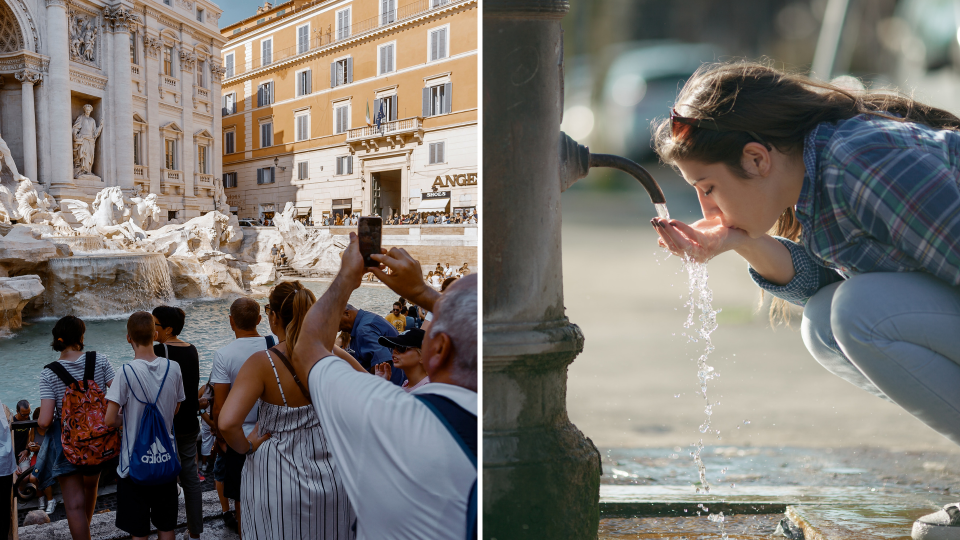Rome to fine tourists for eating ‘messy’ food, going topless

Rome is a city for meandering down cobble-stoned streets, taking photos and eating pizza at the same time. But one of these things will land you with a fine.
The Italian city is cracking down on misbehaving tourists, with new fines targeting ‘messy’ public snacking, making contact with water fountains when taking a drink, men going topless in public and leaving “love padlocks” on bridges.
“Rome is, and always will be, welcoming, but that does not mean tolerating bad behaviour and damage being done to our city,” the mayor of Rome, Virginia Raggi told The Telegraph.
Rome previously announced a ban on eating and drinking at its famous fountains in 2017. Anyone found breaking those rules can expect fines of up to €240 ($390).
The updated city council regulations also targets vendors selling “skip the line” tickets at attractions like the Colosseum.
And if you happen to dress up as a Roman centurion and charge money for pictures, you’re also out of luck.
Centurions can be fined up to €400.
Pulling wheeled suitcases up or down the Spanish Steps could also land you with a fine.
Two Canadians were fined €450 in August 2018 after bathing in the Trevi Fountain.
“Old regulations have been updated to adapt to the needs of a modern society,” Marco Cardilli, deputy chief of staff and security delegate at Rome’s council said.
Overtourism
It comes as Venice moves to address its chronic overtourism crisis by charging an entrance fee on day-time visitors like cruise ship passengers, and taxes on tourist accommodation.
Around 25 million tourists visit Venice every year, with 14 million of those only spending the day there - most often descending from cruise ships.
Additionally, visitors are encouraged to follow the #EnjoyRespectVenezia campaign which instructs visitors to not swim in canals, litter, ride bikes, lie or stand on benches, attach “love locks”, climb trees or pause too long on bridges.
If tourists are caught breaking these rules, they can expect a fine of up to €450 ($730).
However, Venetians have taken to the streets in recent days against “sea monsters” cruise ships, which they claim clog the city’s waterways. The protests come just days after a cruise ship lost control and smashed into a wharf in the ancient city.
Towards the end of May, workers at the Louvre in Paris held a strike as they complained about the growing size and aggression of visitors.
Other cities like Amsterdam in the Netherlands have taken a different route, choosing to market neighbouring city Harderwijk as an alternative destination.
“If we do not take pre-emptive action, the livability in cities and iconic locations will suffer due to visitor overload,” the Netherlands Board of Tourism & Conventions strategy report Perspective 2030 said, explaining that when it comes to tourists, “more is not always better”.
Make your money work with Yahoo Finance’s daily newsletter. Sign up here and stay on top of the latest money, news and tech news.

 Yahoo Finance
Yahoo Finance 
